人教版(2019)选择性必修 第二册 Unit 4 Journey Across a Vast Land Using Language(1)课件(共27张PPT)
文档属性
| 名称 | 人教版(2019)选择性必修 第二册 Unit 4 Journey Across a Vast Land Using Language(1)课件(共27张PPT) |  | |
| 格式 | pptx | ||
| 文件大小 | 6.6MB | ||
| 资源类型 | 教案 | ||
| 版本资源 | 人教版(2019) | ||
| 科目 | 英语 | ||
| 更新时间 | 2023-04-08 13:57:54 | ||
图片预览


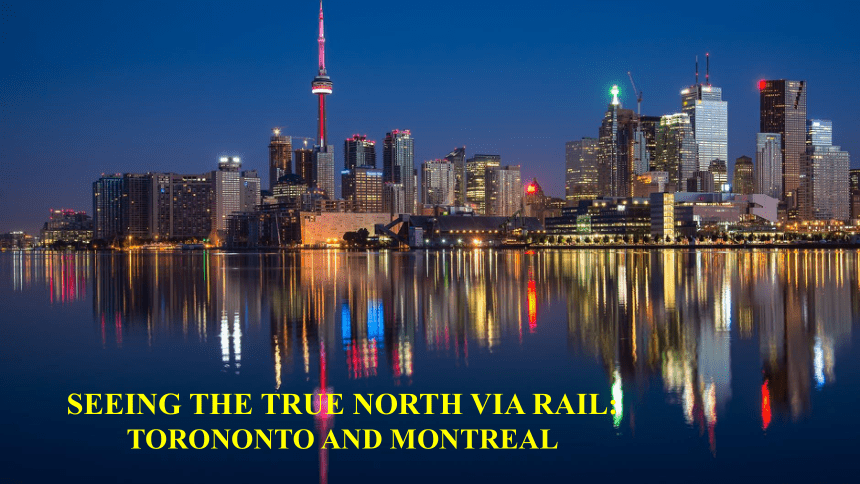
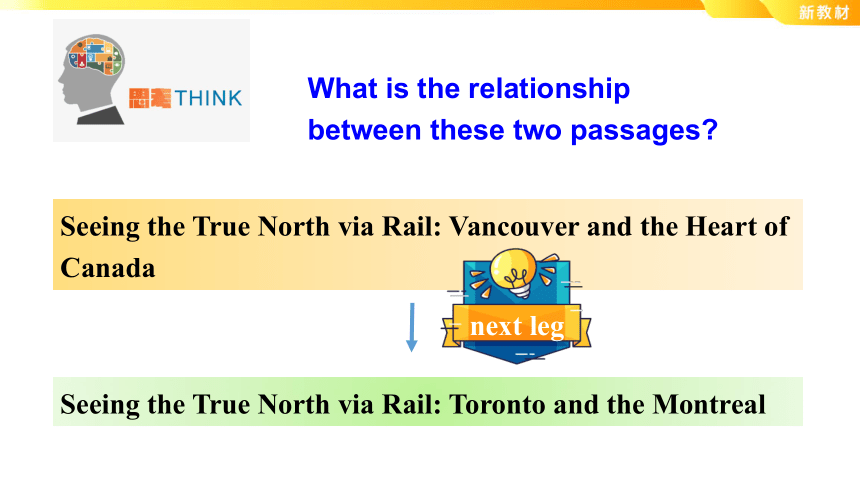
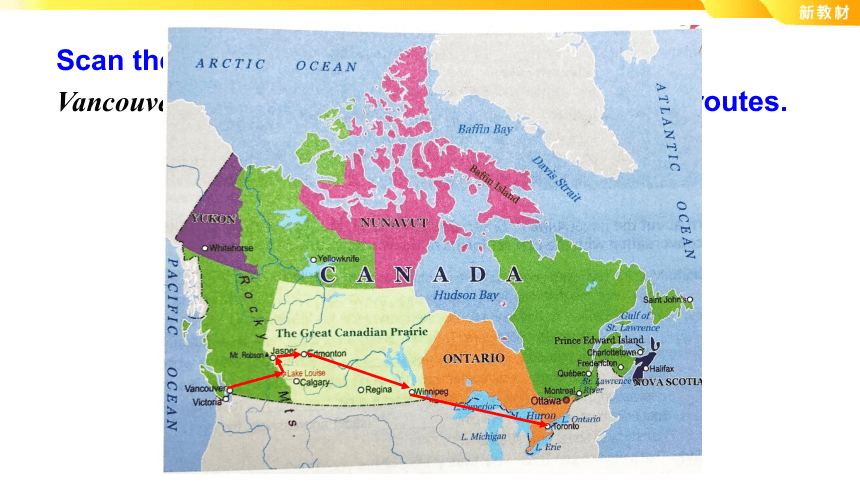
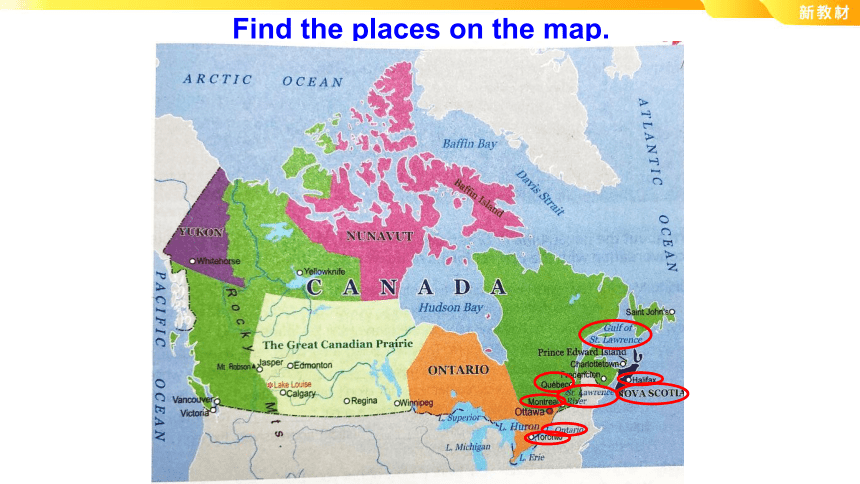
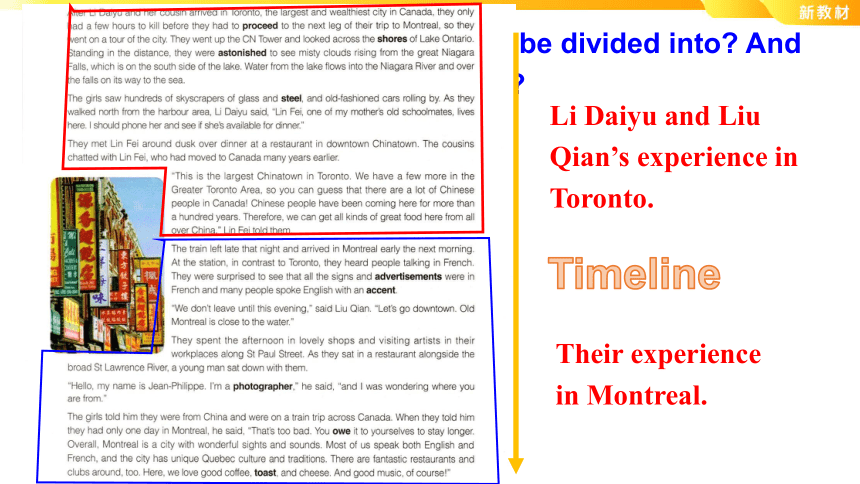
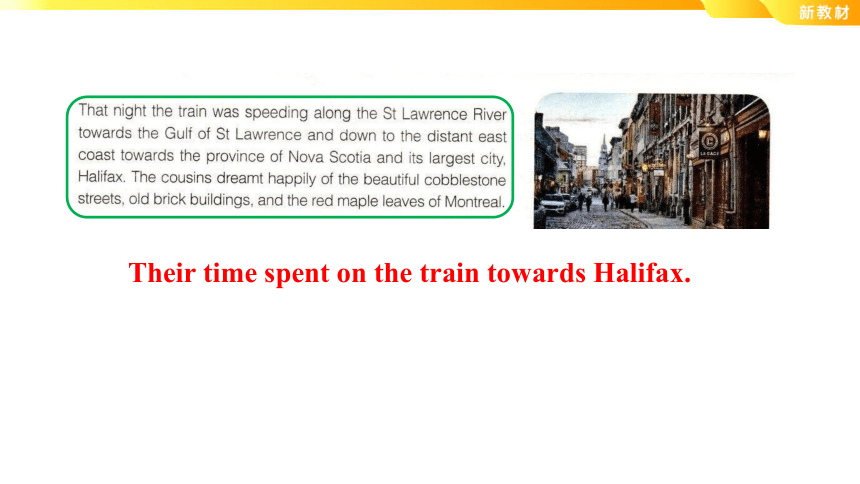
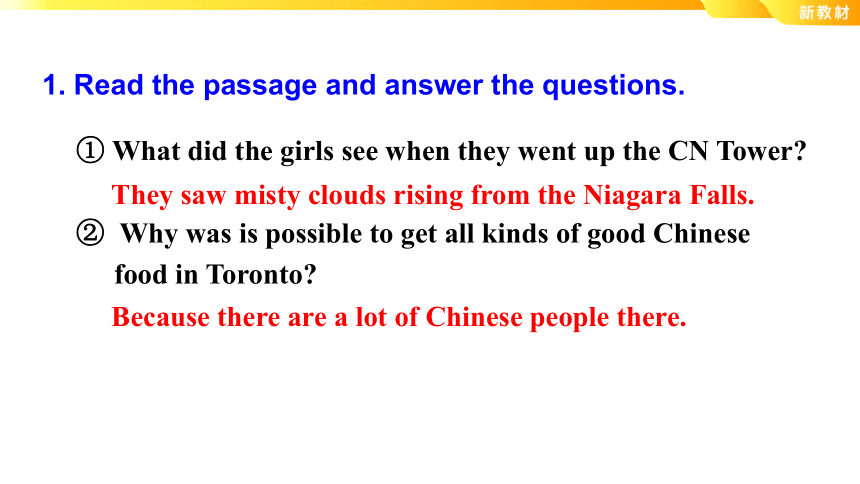
文档简介
(共27张PPT)
UNIT 4
JOURNEY ACROSS A VAST LAND
SEEING THE TRUE NORTH VIA RAIL:
TORONONTO AND MONTREAL
What is the relationship between these two passages
Seeing the True North via Rail: Vancouver and the Heart of Canada
Seeing the True North via Rail: Toronto and the Montreal
next leg
Scan the passage “Seeing the True North via Rail: Vancouver and the Heart of Canada” and mark the routes.
Find the places on the map.
How many parts can the passage be divided into And what’s the main idea of each part
Li Daiyu and Liu Qian’s experience in Toronto.
Their experience in Montreal.
Timeline
Their time spent on the train towards Halifax.
1. Read the passage and answer the questions.
① What did the girls see when they went up the CN Tower
② Why was is possible to get all kinds of good Chinese food in Toronto
They saw misty clouds rising from the Niagara Falls.
Because there are a lot of Chinese people there.
Montreal is city with wonderful sights and sounds. Most people speak both English and French, and the city has unique Quebec culture and traditions. There are fantastic restaurants and clubs around. There, people love good coffee, toast, cheese, and good music.
③ What did Jean-Philippe tell the girls about Montreal and the people there
2. Draw on the map a simple route of the girls' trip across Canada and make notes about what the girls did at each place.
What’s the type of the passage
Travel journal.
What is the main features of this kind of passage
who
people
places
when
time
where
what
scenery/ activities
how
feeling / route
Main content
Timeline
Timeline
Timeline
描写生动,具有很强的画面感和感染力,尤其是大量的描写性语言(例如形容词的使用),特别是对景色和心理感受的描绘。
How to write an email to introduce your trip
3. Imagine that you are Li Daiyu. Using the map and your notes, write an email to your parents telling them about your trip.
How do you write an email to your parents
What impressed you most in Li Daiyu and Liu Qian’s journey
What order would you follow when describing the journey
邮件的文体/结构
邮件主体/景物描写、旅行感受
明确主体部分,以时间为线索
称呼(address)
目的(purpose)
主体(body)
交际性语(communicative sentence)
结尾语(ending)
落款(signature)
who
what
when
how
邮件结构:
Dear Tom, (address)
I am writing to tell you that I’ve found a house which may meet your needs. The house which is on the second floor covers an area of 70 square meters. It faces south so that you can enjoy enough sunshine.....If you are interested in it, please call 15382. If you need any more help, just let me know.
Looking forward to hearing from you.
Yours,
Li Hua (signature)
Structure of an Email
body
purpose
communicative sentence
ending
短文可以分为三部分:
第一部分:简介此次旅行概况;
第二部分:重点介绍旅游过程,如描述旅游中的所见所闻等。另外,可适当表达自己的内心感受,把叙事、写景、抒情相结合,避免平铺直叙。
第三部分:谈谈对此次旅行的感受
篇章结构:
1.描写旅行过程常用过去时,描写地理位置、自然风光时多用一般现在时。
2.在描写旅游的进程时要有一个清晰明确的顺序。一般按旅游的先后顺序描述。
注意事项:
名词:
tour, arrival, visit, visitor, performance, scene, scenery, activity, fun, souvenir ...
形容词:
wonderful, good, lively, beautiful, attractive, fantastic, awesome, spectacular, interesting ...
动词(短语):
arise, stay, travel, arrive, enjoy, start, set off, take part in, join in, buy ...
话题相关词汇:
句型应用:
1. The scenery of ... was very beautiful.
2. It was ... o’clock when ...
3. ... entertained visitors with ...
4. We were impressed by the beautiful scenes of ...
5. After supper, we enjoyed the beautiful night scenes of ...
6. I really enjoy traveling ...
7. It was so amazing that ...
8... is well worth visiting.
UNIT 4
JOURNEY ACROSS A VAST LAND
SEEING THE TRUE NORTH VIA RAIL:
TORONONTO AND MONTREAL
What is the relationship between these two passages
Seeing the True North via Rail: Vancouver and the Heart of Canada
Seeing the True North via Rail: Toronto and the Montreal
next leg
Scan the passage “Seeing the True North via Rail: Vancouver and the Heart of Canada” and mark the routes.
Find the places on the map.
How many parts can the passage be divided into And what’s the main idea of each part
Li Daiyu and Liu Qian’s experience in Toronto.
Their experience in Montreal.
Timeline
Their time spent on the train towards Halifax.
1. Read the passage and answer the questions.
① What did the girls see when they went up the CN Tower
② Why was is possible to get all kinds of good Chinese food in Toronto
They saw misty clouds rising from the Niagara Falls.
Because there are a lot of Chinese people there.
Montreal is city with wonderful sights and sounds. Most people speak both English and French, and the city has unique Quebec culture and traditions. There are fantastic restaurants and clubs around. There, people love good coffee, toast, cheese, and good music.
③ What did Jean-Philippe tell the girls about Montreal and the people there
2. Draw on the map a simple route of the girls' trip across Canada and make notes about what the girls did at each place.
What’s the type of the passage
Travel journal.
What is the main features of this kind of passage
who
people
places
when
time
where
what
scenery/ activities
how
feeling / route
Main content
Timeline
Timeline
Timeline
描写生动,具有很强的画面感和感染力,尤其是大量的描写性语言(例如形容词的使用),特别是对景色和心理感受的描绘。
How to write an email to introduce your trip
3. Imagine that you are Li Daiyu. Using the map and your notes, write an email to your parents telling them about your trip.
How do you write an email to your parents
What impressed you most in Li Daiyu and Liu Qian’s journey
What order would you follow when describing the journey
邮件的文体/结构
邮件主体/景物描写、旅行感受
明确主体部分,以时间为线索
称呼(address)
目的(purpose)
主体(body)
交际性语(communicative sentence)
结尾语(ending)
落款(signature)
who
what
when
how
邮件结构:
Dear Tom, (address)
I am writing to tell you that I’ve found a house which may meet your needs. The house which is on the second floor covers an area of 70 square meters. It faces south so that you can enjoy enough sunshine.....If you are interested in it, please call 15382. If you need any more help, just let me know.
Looking forward to hearing from you.
Yours,
Li Hua (signature)
Structure of an Email
body
purpose
communicative sentence
ending
短文可以分为三部分:
第一部分:简介此次旅行概况;
第二部分:重点介绍旅游过程,如描述旅游中的所见所闻等。另外,可适当表达自己的内心感受,把叙事、写景、抒情相结合,避免平铺直叙。
第三部分:谈谈对此次旅行的感受
篇章结构:
1.描写旅行过程常用过去时,描写地理位置、自然风光时多用一般现在时。
2.在描写旅游的进程时要有一个清晰明确的顺序。一般按旅游的先后顺序描述。
注意事项:
名词:
tour, arrival, visit, visitor, performance, scene, scenery, activity, fun, souvenir ...
形容词:
wonderful, good, lively, beautiful, attractive, fantastic, awesome, spectacular, interesting ...
动词(短语):
arise, stay, travel, arrive, enjoy, start, set off, take part in, join in, buy ...
话题相关词汇:
句型应用:
1. The scenery of ... was very beautiful.
2. It was ... o’clock when ...
3. ... entertained visitors with ...
4. We were impressed by the beautiful scenes of ...
5. After supper, we enjoyed the beautiful night scenes of ...
6. I really enjoy traveling ...
7. It was so amazing that ...
8... is well worth visiting.
